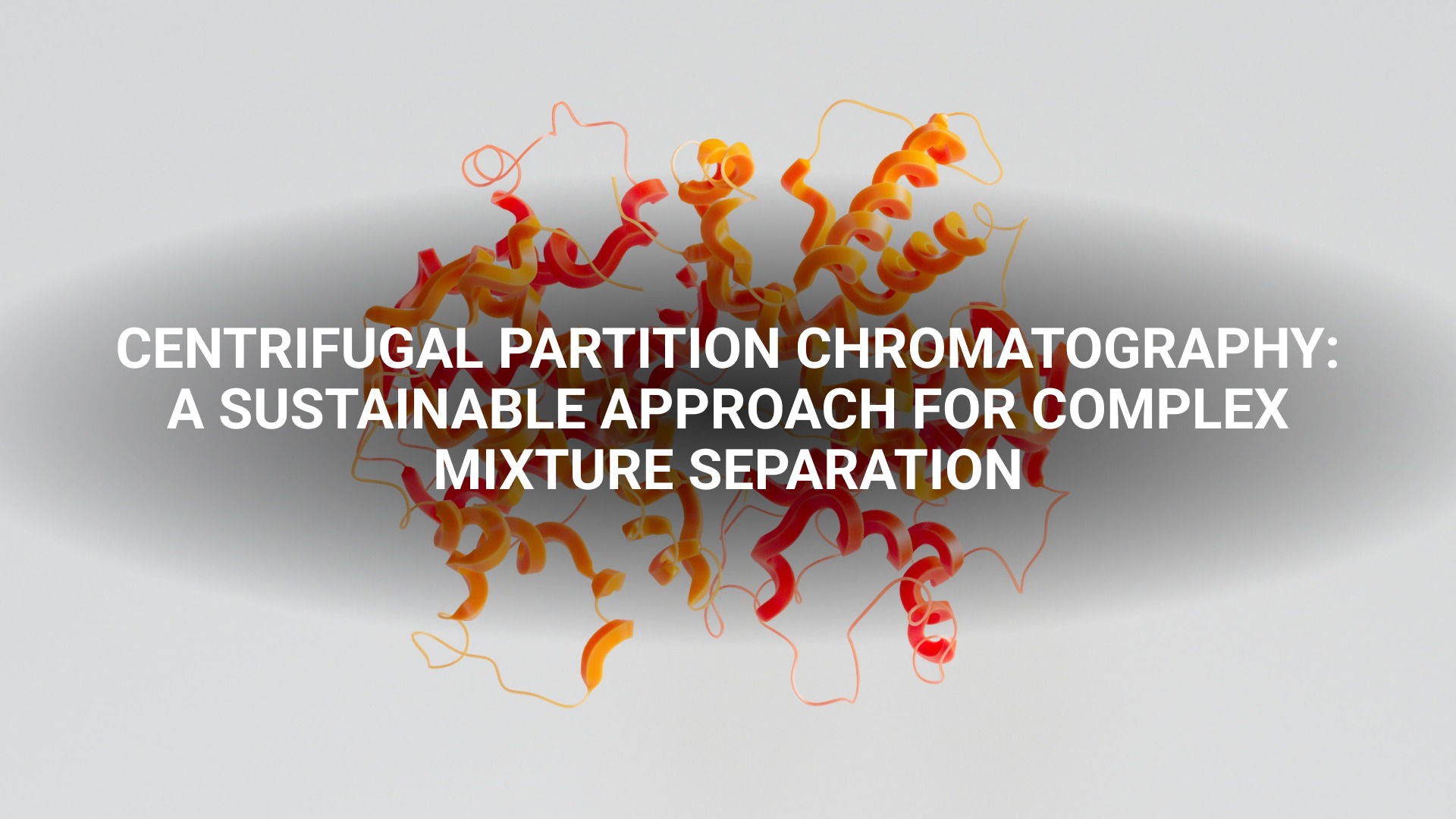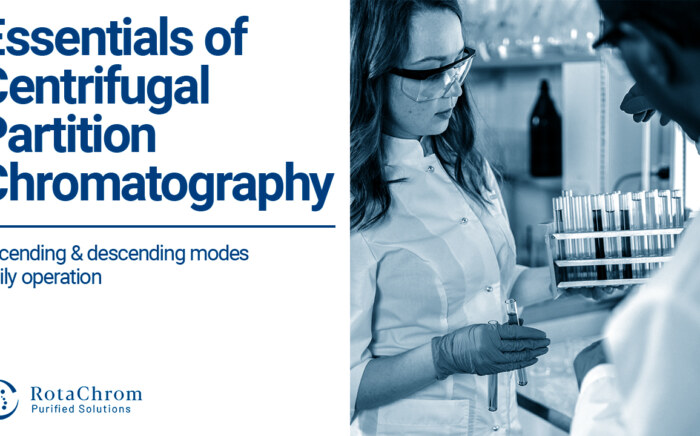Increasing separation efficiency by pH adjustment in Centrifugal Partition Chromatography
NewsChromatography remains a cornerstone in scientific techniques for effectively separating and purifying complex mixtures. Within this realm, Centrifugal Partition Chromatography (CPC) stands out due to its utilization of liquid-liquid partitioning for separation. A key element of CPC is the solutes’ partition coefficient (Kd), which represents the ratio of solute concentration in the stationary phase to that in the mobile phase.
Understanding the Partition Coefficient
The separation process in CPC hinges on the differing partition coefficients of sample components between the mobile and stationary phases. The partition coefficient (Kd) serves as an equilibrium constant that describes the distribution of a compound in a two-phase system. For a specific compound of interest (CoI), this coefficient is the ratio of its concentration in the stationary phase to that in the mobile phase.
This partition coefficient dictates how long each compound remains in the mobile and stationary phases, influencing the speed at which they move through the system. By carefully choosing the stationary and mobile phases and adjusting operational parameters such as flow rate and column length, CPC achieves precise and efficient separation of complex mixtures.
Harnessing the Power of the Partition Coefficient
Centrifugal Partition Chromatography (CPC) distinguishes itself as a unique and innovative technique, offering several advantages over traditional methods. CPC replaces conventional chromatographic columns with interconnected cells filled with the liquid stationary phase. These cells are attached to a rotor, which immobilizes the liquid stationary phase through strong centrifugal force. The mobile phase, containing the sample, is pumped into the rotor under pressure, moving through the stationary phase as tiny droplets to achieve efficient separation.
A significant difference between CPC and other chromatographic methods like High-Performance Liquid Chromatography (HPLC) is CPC’s lack of a solid silica-based stationary phase. Unlike HPLC, which uses an organic moiety bonded to a solid silica support, CPC uses liquid-liquid separation facilitated by gravitational force during centrifugation. This method ensures high efficiency and rapid separation without the need for solid supports.
CPC’s versatility is further enhanced by its ability to operate in ascending or descending mode, controlled by a valve that directs liquid flow in two directions. This flexibility allows for the efficient separation of a wide range of compounds with varying partition coefficients. The success of a separation in CPC is typically measured using the resolution factor (Rs), which indicates the degree of separation between adjacent peaks in the chromatogram.
Resolution and Beyond
A resolution factor (Rs) value of 1.5 or higher indicates well-separated adjacent peaks with a clear baseline, while an Rs value below 1.5 suggests some peak overlap, potentially compromising purity. Achieving an Rs value above 1.5 is considered ideal, signifying significant spacing between peaks and highly efficient and pure separation.
Additionally, the difference in stationary phase volume between HPLC and CPC is crucial. HPLC uses a solid column packed with the stationary phase, whereas CPC distributes the liquid stationary phase across interconnected cells in the rotor. This difference allows CPC to achieve efficient separation with fewer theoretical plates compared to HPLC, making it a highly efficient and cost-effective preparative chromatography technique.
Advancing Chromatographic Solutions with RotaChrom
RotaChrom has developed an industrial-scale CPC system that excels in yield, purity, and cost-effectiveness. RotaChrom’s CPC technology operates on a liquid-liquid principle, eliminating the need for solid stationary phases and relying solely on solutes’ partition coefficients for separation. This methodology enables efficient and high-throughput purification of complex mixtures, with the added benefit of complete sample recovery due to the absence of irreversible adsorption. RotaChrom’s CPC system is a versatile and powerful tool for manufacturing high-quality active pharmaceutical ingredients (APIs), natural products, and other valuable compounds.
Conclusion
Centrifugal Partition Chromatography (CPC) presents a novel and advantageous chromatographic approach, offering benefits like the absence of solid stationary phases, high separation efficiency, and operational flexibility. Its ability to achieve precise and pure separation of complex mixtures has garnered significant attention across various industries, including pharmaceuticals, natural products, and food and beverages. RotaChrom, a leading innovator in chromatographic solutions, has advanced this field with its state-of-the-art CPC technology, providing industrial-scale solutions for the high-quality purification of valuable compounds.



